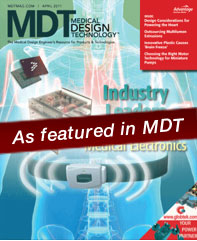How are you influencing Orthopedic Devices?
By Larry Carlberg, Laser Design Service Bureau Manager, Laser Design Services
Orthopedic devices, with their focus on fit and support for the human form, are advancing rapidly as we learn more about how to optimally heal and rehab injuries. Laser Design Services specializes in 3D laser scanning, which can produce a fast, precise CAD model of whatever body part is affected, thus ensuring that the orthopedic devices professionals use with their patients are customized to prevent further injury or misalignment and promote comfort and compliance.
The amorphous organic shapes of the human body are very nearly impossible to accurately reproduce with traditional contact and manual measuring methods. Non-contact 3D laser scanning excels in quickly capturing a freeform object’s complete geometry, no matter how complex, detailed, or malleable.
Applications of the technology include device development, fit, and redesign; device inspection and validation; and mass customization through rapid manufacturing. Even replacement parts and training programs for medical professionals can be created with the ultra-accurate 3D data of objects via 3D laser scanning.
Laser Design Services specializes in 3D laser scanning, which can produce a fast, precise CAD model of whatever body part is affected, thus ensuring that the orthopedic devices professionals use with their patients are customized to prevent further injury or misalignment and promote comfort and compliance.”
Also, robotic integration in manufacturing is paving the way for 3D scanning applications in human prosthetics; the superior capture of human shapes by 3D laser scanning results in CAD files that easily interface with the robotic computer-controlled motions, vastly improving the prosthetics’ appearance, motion, and fabrication process.

